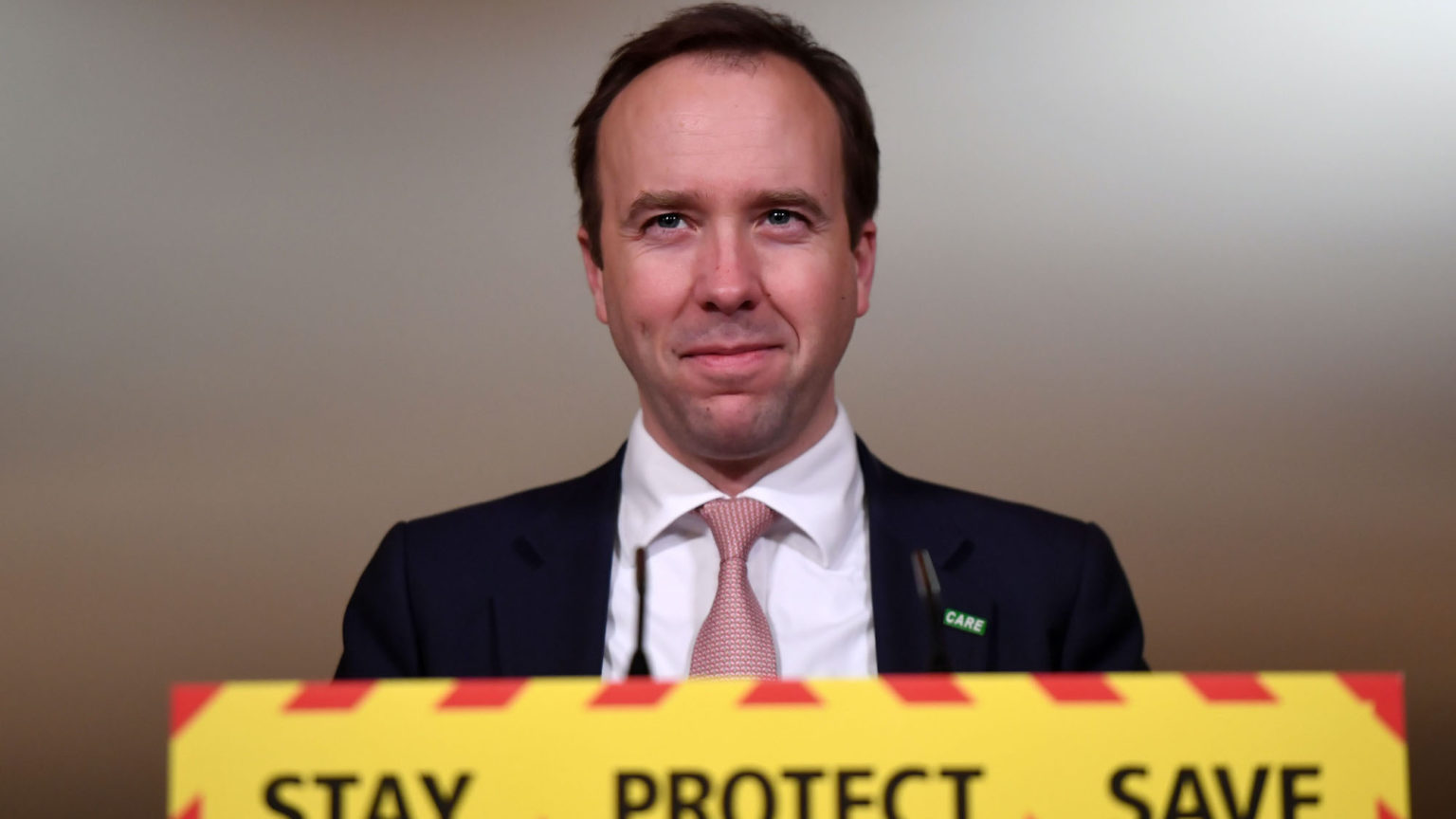How Matt Hancock abandoned care homes to Covid
The Telegraph’s ‘Lockdown Files’ paint a damning picture of the former health secretary.

Just when you thought Matt Hancock couldn’t sink any lower in the public’s estimation, the Telegraph has gone and published a damning exposé about the former UK health secretary. ‘The Lockdown Files’ contain over 100,000 of Hancock’s WhatsApp messages from the height of the Covid pandemic. Over the coming days, the Telegraph has promised to reveal more details about the UK’s pandemic response that had previously remained secret. Above all, the messages published so far are a stark reminder of the cruelty and irrationality of the government’s pandemic policy – especially in relation to care homes.
Over 45,000 care-home residents were killed by Covid in England and Wales in the first two years of the pandemic – making up more than a quarter of all Covid deaths in England. From early on, it was widely understood that elderly care-home residents were especially vulnerable to the virus. This was why Hancock proclaimed back in May 2020 that, ‘Right from the start, we have tried to throw a protective ring around our care homes’. But no such ‘protective ring’ existed. When the opportunity arose to fix this, Hancock’s WhatsApp messages suggest that he resisted advice that could have offered more protection.
As we highlighted on spiked at the time, early guidance from the Department of Health called on NHS hospitals to discharge Covid patients into the care sector as quickly as possible. This included patients who had not been tested for Covid – and even those who had tested positive for the virus. This advice remained in force until 15 April 2020, several weeks into the first lockdown. In other words, as most of the public was forced to remain indoors to control the spread of the virus, Covid was tearing through the very places that housed the most vulnerable.
A chance to rectify this deranged and deadly policy came with the publication of Hancock’s social-care action plan on 16 April. This advised that all hospital patients being discharged to care homes should be tested. However, Hancock’s new guidance ignored a plea from the chief medical officer to test all people entering care homes from the community.
‘Chris Whitty has done an evidence review and now recommend[s] testing of all going into care homes, and segregation whilst awaiting result. This is obviously a good positive step and we must put [it] into the doc’, Hancock told his advisers on 14 April. However, later that day, he seemingly changed his mind and thought this precaution unnecessary, claiming that it would ‘muddy the waters’ in the guidance. Worse still, a message from 10 days later suggests Hancock feared that the systematic testing of care homes could ‘get in the way of’ the target he had set himself – of conducting 100,000 Covid tests in the community per day.
Essentially, the new policy left yet another gaping hole in the ‘ring of protection’ the health secretary had promised. In his Pandemic Diaries memoir, Hancock wrote that ‘the vast majority of infections [in care homes] were brought in from the wider community’ – although he attributed this to care-home staff spreading the virus, rather than his misguided testing strategy. A headline-grabbing testing target, the leaked messages suggest, seemed to take priority over testing people coming in and out of care homes.
It gets worse. After the failure to shield care homes from the virus in the spring of 2020, by the autumn, junior minister Helen Whately started to warn Hancock that the restrictions on care homes were proving overly onerous and even ‘inhumane’. Residents had been separated from loved ones for too long. Whately repeated her pleas in January 2021, by which point lonely residents, she said, were ‘at risk of giving up’. Social isolation was now the bigger risk to residents’ health, but restrictions on care homes remained extremely tight, at Hancock’s insistence, even for much of 2021 when vaccines were readily available and rolled out to millions.
The ‘Lockdown Files’ paint a picture of neglect for the elderly and most vulnerable. The very people who most needed the state’s protection were instead failed at every turn. They were abandoned when Covid was raging, and later isolated from society when the risks to their health had waned.
Hancock, for his part, has blasted the Telegraph for publishing what he describes as ‘doctored’ messages, ‘spun to fit an anti-lockdown agenda’. He says it would not have been possible to implement testing in care homes when he rejected Whitty’s advice to do so, despite the 100,000 tests per day he had earmarked for his target. He has also accused political journalist Isabel Oakeshott – his Pandemic Diaries ghost writer who leaked the messages to the Telegraph – of breaking a legal non-disclosure agreement. What he has signally failed to do is acknowledge the terrible consequences of the policies he endorsed.
With more ‘Lockdown Files’ still to come, perhaps Hancock’s reputation could yet sink even lower.
Fraser Myers is deputy editor at spiked and host of the spiked podcast. Follow him on Twitter: @FraserMyers
Picture by: Getty.
To enquire about republishing spiked’s content, a right to reply or to request a correction, please contact the managing editor, Viv Regan.









Comments
Want to join the conversation?
Only spiked supporters and patrons, who donate regularly to us, can comment on our articles.